Transfusion of BloodWhen a person loses blood due to a certain injury, medical procedure, accident or because of certain health condition, the lost blood is transferred into the body from outside. This process of providing blood to the body is called a blood transfusion. Typically, donors provide the blood. Blood banks and medical professionals guarantee the safety and minimal danger of transfusions. 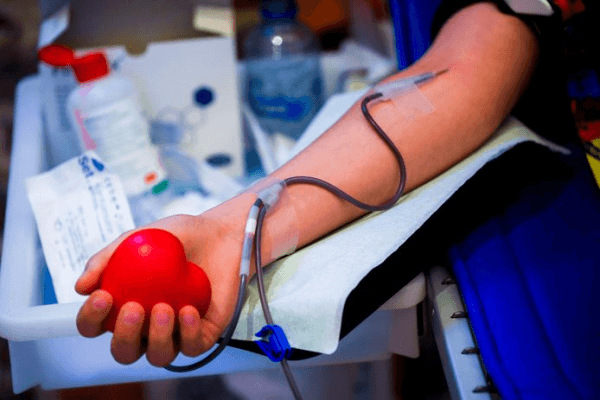
What is Blood Transfusion?In the blood transfusion process, an intravenous line is used to transfer blood between the donor and the recipient. The person giving blood (donating blood) is called the donor. The person to whom blood is given (receiver of blood) is called the recipient. The process helps replenish the normal amount of blood required by the body for proper functioning. A transfusion can help your body replace any missing components of healthy blood if you are missing one or more of them naturally. The process is rather simple and can be performed anywhere. The whole process usually takes 1 to 4 hours. The time depends on the amount of blood required by the recipient. Every year, around 5 million Americans require blood transfusions, which are often safe. 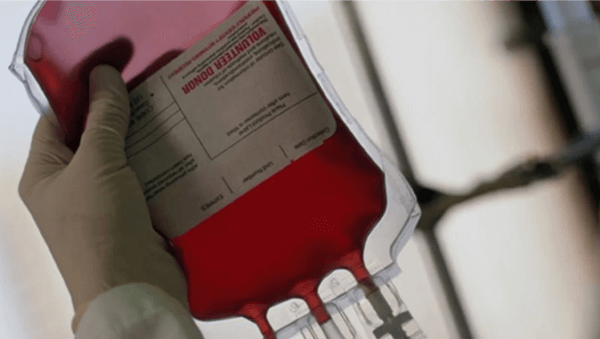
Blood GroupsThe main condition in blood transfusion is both the donor and the recipient should have the same blood type. Only that person can donate blood whose blood group is the same as the recipient's blood group. Otherwise, your blood's antibodies will fight it, leading to complications. Because of this, blood banks check for infection-causing agents, blood type, and Rh-factor (positive or negative). A transfusion can be given to practically anyone with type O blood, which makes up about 40% of the population. A person whose blood type of O positive can donate blood to people of any blood type, and therefore they are called universal donors. On the other hand, people whose blood group is AB can only donate blood to people with AB blood type, but they can receive blood from anyone having any blood group. Therefore, people with AB blood type are called universal recipients. There is another category of blood type called RH blood type. Similar to ABO blood grouping, RH blood type can only be transferred between people with the same blood type. That is, RH negative can only accept blood from RH negative and RH positive can only accept blood from RH positive. 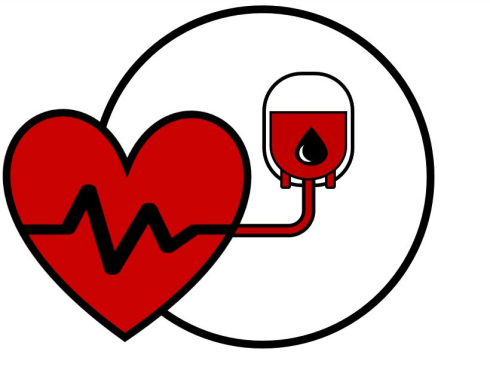
Blood Transfusion TypesSeveral prevalent blood cell transfusion procedures include:
Is It Possible That I'll Require a Blood Transfusion?Transfusions of blood can save lives. One may require blood transfusions if you've experienced blood loss through an accident or after surgery, or if you have certain medical problems like:
The Components of BloodA transfusion can also provide specific blood components or portions in addition to whole blood. These elements consist of the following:
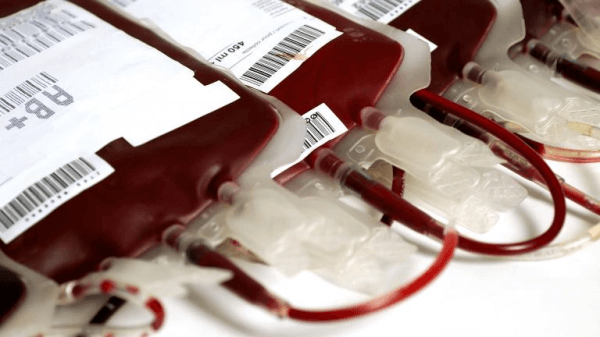
Blood Sources for a Successful TransfusionUsually, the blood is given anonymously to hospitals, where it is used as needed. There are proper places where the donated blood is stored. These places are called blood banks. If the donor is unavailable, blood is taken from the blood bank for transfusion. But occasionally, people may give blood to a friend or family member. Additionally, you might be able to save your blood in preparation for the planned surgery. Transfusion of BloodThe stored blood taken from the donor is stored in specialized medical bags until they are required. The blood bags are made up of plastic with a narrow bottle-like opening. The medical practitioner, while transfusion, attaches a narrow plastic tube to the opening of the blood bag. The tubes with blood bags are called intravenous lines (IV). The end of the tube has a needle attached to it which is required to puncture the vein. Once the vein is punctured and the tube is attached to the body, blood starts flowing into the circulatory system. How Should I Prepare for The Transfusion?The nurse will check the following before transfusion -
During the transfusion, the nurse will:
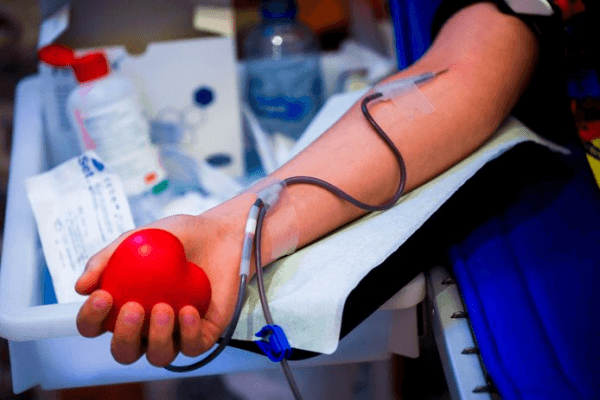
Time Taken in Blood TransfusionHow much blood and/or blood components you require will determine how long a blood transfusion will take, among other things. The majority of transfusions last one to three hours. For further information regarding your needs, speak with your healthcare practitioner. Risks of Blood TransfusionThe blood used in transfusions is carefully inspected by the healthcare sector to ensure its safety. Blood banks enquire about a possible donor's health, habits, and travel history. Blood donations can only be made by those who meet blood donor standards. Blood donations are tested in accordance with federal regulations. Blood is discarded if there is even the slightest doubt that it is unsafe. 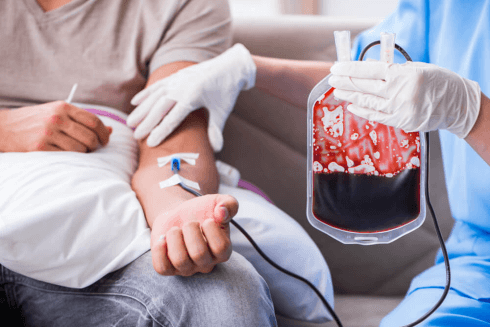
Other Complications and RisksBlood transfusions are generally regarded as safe. However, there are dangers. Complications might appear suddenly or develop gradually.
Despite these efforts, there is a slight possibility that anything will slip through the screening procedure. The likelihood of this occurring, though, is quite slim. For instance, following a transfusion increases your risk of contracting the following diseases:
Lightning strikes are more likely to happen to you than receiving a transfusion and contracting an illness. Blood transfusion is an effective technique to replenish the body's blood. It is also a very easy and usually risk-free procedure. 
Outcomes of Blood TransfusionsDifferent people show different responses during the process of blood transfusion. The responses people may have include:
Most individuals don't experience any of these responses. When they do occur, they frequently feel similar to allergies. During a blood transfusion, if you face any discomfort or any unexpected symptoms, you are advised to tell your doctor instantly. Doctors can take the required measure, one of which could be stopping the blood transfusion. Advantages Blood TransfusionsBlood is crucial. If any of the components of blood is not present, the person can develop certain illnesses which can be life-threatening. The body benefits from blood and its constituent parts in the following ways:
Recuperation of Blood TransfusionYour healthcare practitioner will advise you to relax for 24 to 48 hours following your transfusion. Additionally, you must call and arrange a follow-up appointment with your doctor. When Receiving a Blood Transfusion, Should I Call My Doctor?An unexpected reaction to a blood transfusion may occur. You may experience a reaction immediately, a day or even several months after receiving the transfusion. If a person is facing any of the following problems, he/she should consult the medical supervisor or healthcare practitioner:

Substitutes for Blood TransfusionAlthough there are alternatives to blood transfusions, they might not always be effective. Drugs might assist your body in producing blood. But you'll probably require a transfusion if you've lost too much blood or your life is in jeopardy. Alternatives won't provide support soon enough. Is it Possible for me to Refuse a Blood Transfusion?Although you can refuse a transfusion, you should be aware of the risks and effects. Discussing this choice with your doctor is necessary. You risk lasting impairment or death if you decide to decline the transfusion. ConclusionPeople may become apprehensive or worried when receiving blood transfusions. However, medical professionals make every effort to guarantee the safety of these treatments. They take precautions to protect you, including screening blood donors and ensuring the proper blood is used.
Next TopicBasal Ganglia Parts
|
 For Videos Join Our Youtube Channel: Join Now
For Videos Join Our Youtube Channel: Join Now
Feedback
- Send your Feedback to [email protected]
Help Others, Please Share










